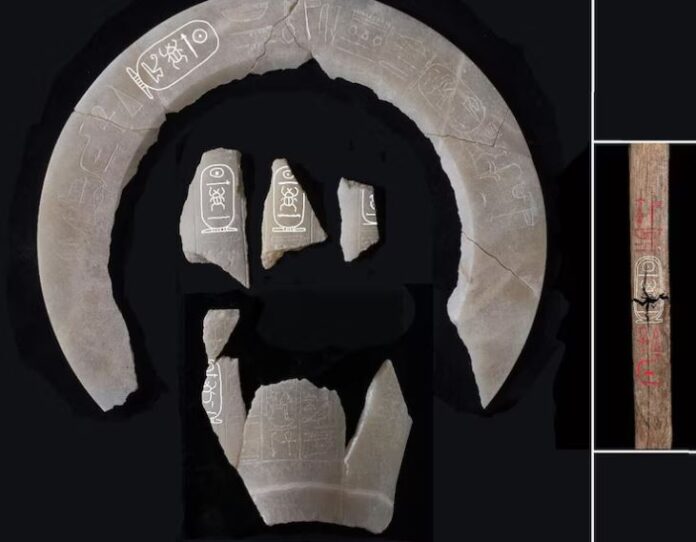Luxor, Egypt – Egyptian officials have announced the discovery of a royal tomb belonging to King Thutmose II, marking the first such find in over 100 years, the Ministry of Tourism and Antiquities confirmed in a statement on February 18, 2025.
The Egyptian-British archaeological mission uncovered the tomb in Mount Thebes, located on the west bank of the Nile near Luxor. The site, dating back to the 15th century B.C., is the last of the lost royal tombs of the Eighteenth Dynasty, the period that produced some of ancient Egypt’s most renowned rulers, including Hatshepsut and Tutankhamun.
Also Read: Massive Sinkholes in Amazonian Town Force Residents to Flee
Significant Discovery Unveiled
Minister of Tourism and Antiquities Sherif Fathi praised the excavation efforts, stating that the discovery would shed new light on Egypt’s ancient civilization.
“This is one of the most significant archaeological breakthroughs in recent years,” said Mohamed Ismail Khaled, Secretary-General of Egypt’s Supreme Council of Antiquities.
The excavation team first located the entrance and main passage to the tomb in October 2022, initially believing it belonged to a royal consort of the Thutmosid dynasty. However, further evidence confirmed the site as the final resting place of King Thutmose II, who ruled for a brief period before his death around 1479 B.C.
Historical and Archaeological Insights
Thutmose II was married to his half-sister, Hatshepsut, who later proclaimed herself pharaoh following his death. Historical accounts suggest Hatshepsut wielded considerable influence during her husband’s reign and beyond.
Archaeologists believe the design of the tomb served as a prototype for later royal burials of the Eighteenth Dynasty. Piers Litherland, leading the British team of the excavation, emphasized that the architectural simplicity of the tomb provided valuable insights into the evolution of Egyptian burial practices.
Tomb Condition and Restoration Efforts
The tomb was discovered in a severely deteriorated state, having suffered significant water damage shortly after Thutmose II’s burial.
“Flooding led to the collapse of much of the tomb’s interior, necessitating extensive restoration efforts to recover and piece together its damaged sections,” said Mohamed Abdel-Badii, head of the Egyptian Antiquities Sector.
Studies suggest that the tomb’s original contents were moved in antiquity, possibly to protect them from further deterioration or looting. Among the artifacts recovered at the site were:
Alabaster jars inscribed with the king’s name and that of his chief royal consort
Fragments of funerary furniture
Plaster remains adorned with yellow star motifs
Portions of the “Book of Amduat”, a key religious text associated with Egyptian royal burials
Continuing the Search for Lost Artifacts
Although Thutmose II’s mummy was discovered in 1881 in the Al-Deir El-Bahari Cache, archaeologists are now working to determine the fate of the tomb’s original treasures.
Litherland confirmed that the team will continue excavations in the area in hopes of uncovering additional artifacts and burial relics.
This landmark discovery is expected to further illuminate the burial traditions of ancient Egypt and provide new historical insights into one of the civilization’s most influential dynasties.



